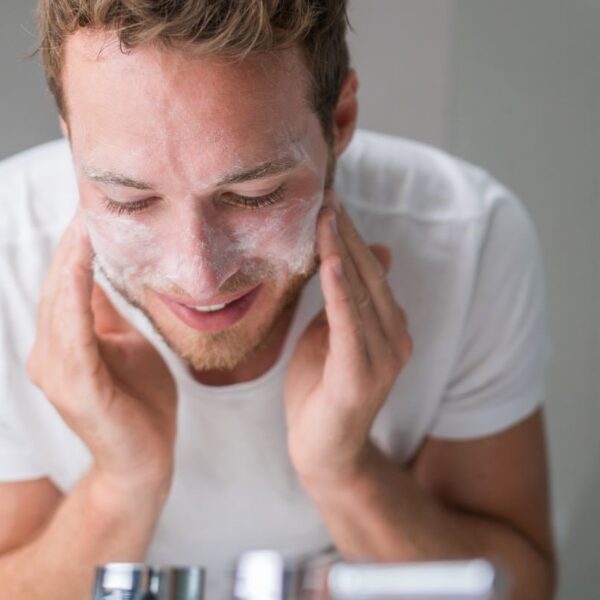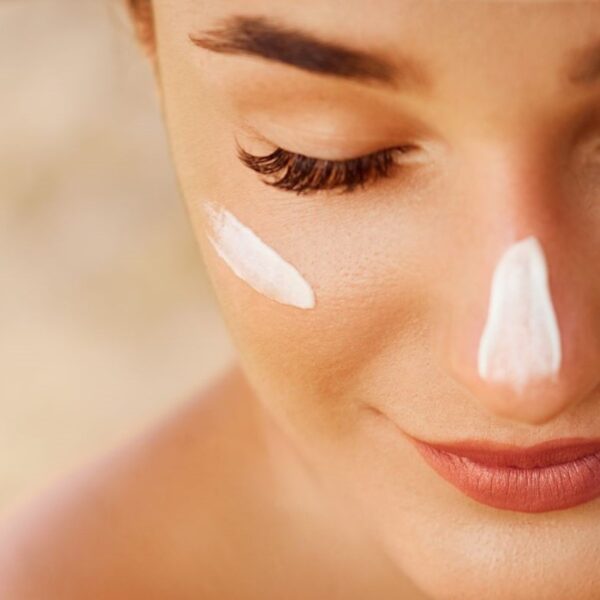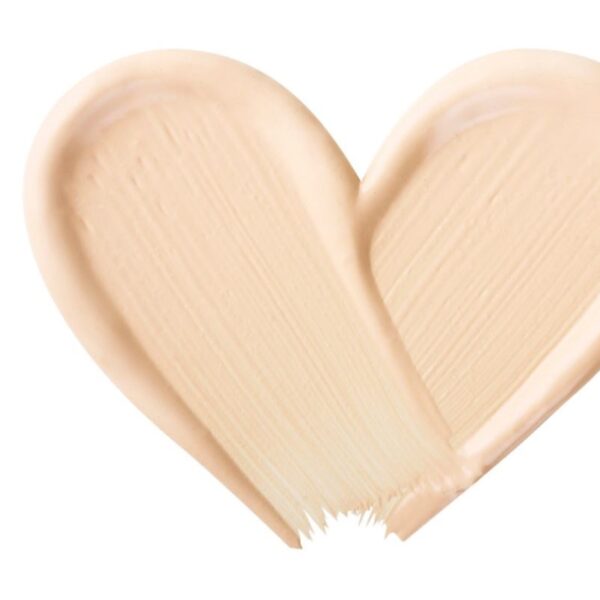Glycolic acid (GA), a hydroxy-acetic acid, is an alpha hydroxy acid (AHA) with a small molecular size. A-hydroxy acids (AHAs) are a group of organic acids found in natural foods, such as sugarcane (glycolic acid), milk (lactic acid), apples (malic acid), citric fruits (citric and ascorbic acid), and grapes (tartaric acid). Derived predominantly from sugarcane, GA has been embraced by the personal care industry owing to its various applications and has been adopted in many daily skin care routines. This article aims to shed light on the use and applications of GA in personal care products, discussing its functions, chemical properties, formulation considerations, and regulatory considerations.
What is Glycolic Acid?
Among the AHA family, the different acids differ in the length of molecules. Glycolic acid is the smallest one because it contains only two carbons. This structure makes Glycolic acid particularly easy to handle for dermatological applications since it can seep through the skin layers.
Glycolic acid is a type of alpha hydroxy acid (AHA). Alpha hydroxy acids are natural acids found in foods. Glycolic acid (hydroxyacetic acid; H₂OCH₂CO₂H) is a colorless, odorless, and hygroscopic crystalline solid highly soluble in water. It is used in various skin-care products.
Source: Wikipedia
Being the smallest AHA, GA can penetrate the skin more effectively than other AHAs. Due to the presence of a hydroxyl group, GA’s polar molecular structure and small molecular size enable it to seep into the skin, making it a powerful ingredient in skin care products. It is highly soluble in water and maintains a relatively low pH, a factor that significantly contributes to its exfoliating properties.
Use of Glycolic Acid in Personal Care
The exfoliating capabilities of GA are at the forefront of its uses. GA promotes skin cell turnover by breaking down the substances that bind older, dull cells at the skin’s surface, revealing younger, brighter cells underneath. This process lends the skin a more vibrant, rejuvenated appearance and smoothens its texture.
Glycolic acid and salicylic acid are two popular skincare ingredients for acne treatment. Salicylic acid is a beta hydroxy acid (BHA). It’s naturally found in willow bark and wintergreen leaves. It can also be artificially synthesized in a lab. Glycolic acid is an alpha hydroxy acid (AHA) found naturally in sugarcane and can be made artificially as well.
Like glycolic acid, salicylic acid has an exfoliating effect on the skin. It can also remove excess sebum (oil) and reduce sebum production, making it an excellent ingredient for unclogging pores. Glycolic acid decreases inflammation and protects against ultraviolet B radiation. It also works against bacteria that cause acne breakouts.
Furthermore, GA promotes collagen synthesis, thus instrumental in mitigating signs of aging such as fine lines and wrinkles. Its humectant properties attract moisture, providing hydration and enhancing skin’s elasticity. GA’s versatility makes it popular in various personal care products, from cleansers and toners to serums and brightening creams.
Applications in Personal Care and Dermatology
The practical uses of glycolic acid during the past few years have expanded to cover various conditions. Hyaluronic acid is great for keeping the skin hydrated and plump. But when using active ingredients that exfoliate, enhance skin texture, reduce blemishes, and cause skin cell regeneration, glycolic acid is one of the most prominent active used for various skin concerns. Glycolic acid is beneficial in the treatment of a variety of different hyperproliferative diseases and varying skin conditions. Several patients with plaque psoriasis have recently been treated with 70% solutions and experienced excellent results. Ichthyosis and hyperkeratosis palmaris and plantaris can benefit from treatment with glycolic acid as alternative or adjuvant therapy. Keratosis pilaris and warts can also be treated with glycolic acid with good results.
Briefly indicated below are some dermatological diseases in which glycolic acid has shown promising results:
| Function | Applications |
| Anti-Acne | Low concentrations of glycolic acid produce diminished corneocyte cohesion and subsequent prevention of stratum corneum thickening. The clinical manifestation of these pharmacologic actions is an improvement of fine wrinkles. 70% glycolic acid applied on facial skin weekly for several months effectively reduces wrinkles. This action is likely due to the increased biosynthesis of dermal glycosaminoglycans and new collagen formation in the papillary dermis. |
| Aging and Photoaging | Glycolic acid is used in skin resurfacing treatments. Glycolic acid is a substance that chemically exfoliates the skin by dissolving dead skin cells and oils. It may also help boost collagen production and support skin moisture. Glycolic acid can remove the very top layer of skin cells without scrubbing, which can cause irritation. |
| Prevents Keratoses | Glycolic acid is used in skin resurfacing treatments. Glycolic acid is a substance that chemically exfoliates the skin by dissolving dead skin cells and oils. It may also help boost collagen production and support skin moisture. Glycolic acid can remove the very top layer of skin cells without scrubbing, which can cause irritation. |
| Chemical Exfoliant | Glycolic acid is used in skin resurfacing treatments. Glycolic acid is a substance that chemically exfoliates the skin by dissolving dead skin cells and oils. It may also help boost collagen production and support skin moisture. Glycolic acid can remove the very top layer of skin cells without scrubbing, which can cause irritation. |
| Reduces Age Spots and pigmentation reduction | The removal of age spots can be obtained with the repeated use of high concentrations of glycolic acid or with lower formulations applied daily for long periods. Glycolic acid mixed with 2% hydroquinone can benefit patients and cause less irritation.One of the top benefits of glycolic acid is its remarkable ability to fade dark spots, age spots, and melasma. Hyperpigmentation mainly impacts the top layer of skin. When applied, glycolic acid removes and exfoliates the darkest skin cells to reveal a fresh, more even skin tone underneath. |
Product Examples
| Type | Examples |
| Skin Care | Skin serums, Brightening creams, Anti-aging creams, Lotions, Anti-acne creams, Anti-spot formulations, and Exfoliating toning solutions. |
Properties of Glycolic Acid
| Appearance at 25 °C | White powder or colorless crystals |
| Molecular Weight (g/mol) | 76.05 |
| Density at 18°C (g/cm3) | 1.49 |
| Solubility | Soluble in Water. Soluble in alcohols, acetone, acetic acid, and ethyl acetate. |
| Melting Point (°C) | 75-80 |
| Boiling Point (°C) | 112 |
| Refractive Index | 1.424 |
| Odor | Odorless, very mild buttery |
| pH | 2 |
| Shelf Life | 12-18 months |
| Stability | Stable. Incompatible with bases, oxidizing agents, and reducing agents. |
| Storage Conditions | Odorless, very mild, buttery |
Glycolic Acid Formulation Considerations
- Unless particularly stated by suppliers, glycolic acids require a low pH, around 3.5, to be ‘bioavailable’ and effective.
- However, there need to be separate considerations when it comes to formulating pH to be at a high input of acids, where the final pH is around 4.5 or even 5.
- When an acid is added to a formula, it pulls the pH down. The more acid that is added, the lower that pH becomes. When a company ‘adds’ a lot of acid to a formula, but the final product is pH adjusted back up, they effectively turn the acid to its inactive salt form.
- Even partially neutralized, the portion that has been neutralized may not be present at all. This neutralization means that any preservatives, gums, emulsifiers, or even surfactants intended to be added to the formula with these acids must be compatible with the low pH required to ensure their effectiveness. Even though the formulas have a low pH, a preservative is still needed anytime its pH exceeds 3.
- Glycolic acids can boost the performance of a personal care regime, but the formulas need to be created with careful checks and measures to ensure safety, stability, and efficacy.
- The final product must be tested for safe pH due to its acidity for peels, creams, lotions, masks, and cleansers. The optimal pH ranges from 3.5-5.0. After adding glycolic acid, some over-the-counter products will separate due to the low pH and need to be stabilized.
Typical Formulations
AHA’s Exfoliator Cream Formulation Phases
A beige viscous cream with pH ranging from 2-5.
| PHASE | INCI Name | Trade Name | % Wt. |
| A | Deionized Water | Deionized Water | 76.900 |
| Disodium EDTA | Disodium EDTA | 0.100 | |
| Glycerin | Glycerin USP | 2.00 | |
| Xanthan Gum (and) Lecithin (and) Sclerotium Gum (and) Carrageenan (and) Silica | VEGEL | 2.00 | |
| B | Glyceryl Stearate (and) Palmitic Acid (and) Cetyl Alcohol (and) Sodium Cocoyl Glutamate (and) Cetyl Palmitate (and) Hydrogenated Lecithin (and) Stearic Acid | Ecobase Crystal Plus | 1.50 |
| Glyceryl Stearate Citrate (and) Polyglyceryl-3 Stearate (and) Shea Butter (and) Hydrogenated Lecithin (and) Xanthan Gum | Ecobase SB H | 3.50 | |
| Caprylic Capric Triglyceride | iMol CCT | 3.00 | |
| Butyrospermum Parkii Butter | iShea Butter | 2.00 | |
| C | Glycolic Acid | iWhite GA | 4.00 |
| D | Lactic Acid | iWhite LA | 2.00 |
| E | Mandelic Acid | iWhite MA | 2.00 |
| F | Phenoxyethanol (and) Ethylhexylglycerin | Saliguard EHGP | 1.00 |
| Total | 100 | ||
Formulation Procedure
- Mix Phase A until the product is homogenous.
- Heat Phase A and B separately up to 75C.
- Emulsify, adding Phase B into Phase with strong mixing.
- Cool down.
- Add the rest of the ingredients individually, mixing after each addition.
Glycolic Acid Safety & Regulatory Concerns
FDA Information
Glycolic acid is GRAS Accepted and FDA Approved.
The Scientific Committee on Cosmetic Products and Non-Food Products Intended for Consumers (SCCNFP)
The SCCNFP adopted a position paper (SCCNFP/0370/00) (1) on the safety of AHA based on studies on short-term phototoxicity (sensitivity of human skin to UV-induced damage: sunburn cells and pyrimidine dimers production) and skin irritation.
- The SCCNFP considered a need for more information to provide a full scientific assessment of the safety of AHA.
- However, on the precautionary principle, the SCCNFP suggested that: Glycolic acid may be used safely at a level of up to 4 % and a pH ≥ 3.8
Further, it was recommended that there should be appropriate warnings to the consumer:
- To avoid contact with the eyes.
- Avoiding or affording protection from UV while using products containing AHA because of the suggestion of susceptibility to increased damage from UV while cosmetic products containing them are being used.
Asian Regulatory Information
According to the safety guidelines of common product categories given by ASEAN- AHAs products act by removing dead cells from the skin’s surface to brighten the skin. AHAs in various concentrations are used in chemical peels. The concentration determines its usage
- Products with a concentration lower than 10% can be used by consumers.
- Products with a concentration between 10% and 20% should only be used by a professional like an aesthetician.
- Higher concentrations of more than 20% can only be used as a treatment by a qualified medical practitioner such as a dermatologist.
Cosmetic Ingredient Review (CIR)
The Cosmetic Ingredient Review (CIR) Expert Panel — the industry’s self-regulatory body for reviewing the safety of cosmetic ingredients — concluded that products containing the AHAs are safe for use by consumers if:
- The AHA concentration is 10 percent or less.
- The final product has a pH of 3.5 or greater.
- The final product is formulated in such a way that it protects the skin from increased sun sensitivity, or its package directions tell consumers to use daily protection from the sun.
Identification Numbers
| CAS Number | 79-14-1 |
| EC Number | 99 79-14-1 |
Health Effects of Glycolic Acid
- Common side effects of Glycolic acid include dry skin, erythema (skin redness), burning sensation, itching, skin irritation, and skin rash. Therefore a patch test is always recommended before using glycolic acid actively.
- In the case of sensitive skin type, it is recommended to use glycolic acid in lower concentrations and less frequently and also a patch test first to see how skin reacts to the AHA.
- It can make the skin more sensitive to sunlight, so consumers should always use sunscreen and protective clothing before entering outdoors.
- AHA, especially at high concentrations, acts as an exfoliant. Some concern has been expressed that removing dead skin surface cells may adversely affect the barrier function of the stratum corneum (SC). Impairment in skin barrier function will cause an increased transepidermal water loss (TEWL). However, in a meeting with the SCCNFP, CTFA provided data to demonstrate no compromise in the skin barrier after either short or longer-term skin applications of AHA, as measured by TEWL. In all cases, it was shown that AHA does not compromise the integrity of the skin barrier.
- Glycolic acid helps reverse sun damage to the skin. Glycolic acid has been shown to diminish corneocyte adhesion at the lower levels of the stratum corneum and to cause epidermolysis, further supporting its therapeutic use in some dermatological conditions such as acne, actinic keratoses, age spots, warts, wrinkles, and for superficial and deep peeling. Its effects on peeling depend on the time the agent is left on the skin and its concentration.
- The commonly available concentrations of glycolic acid vary from 2% to 70% in lotions, creams, and gels. When applied topically, glycolic acid has shown its effects at the epidermal and dermal levels. At concentrations of S-20%, it exerts corneocyte detection among cells at the lower levels of stratum corneum and stimulates cellular mitosis. Glycolic acid does not cause disaggregation of corneocytes of the mature upper levels of the stratum corneum, as keratolytic agents do. Still, it exerts its influence at the lower, newly forming levels of stratum corneum.
Fun Facts About Glycolic Acid
- Using alpha-hydroxy acids, including glycolic acid, is not a modern concept. Historical records suggest Cleopatra bathed in sour milk containing lactic acid, another type of AHA, to maintain her youthful appearance.
- Besides skincare, glycolic acid is also used in the textile industry in dyeing and tanning and in the food industry as a flavoring agent and preservative.
Additional Resources
- Opinion of the Scientific Committee on Consumer Products (SCCP) – Safety of Alpha-Hydroxy Acids in Cosmetics
- Scientific Opinion on the safety of alpha-hydroxy acids (AHAs) in cosmetic products
- Alpha Hydroxy Acids Safety Information
- DOI – In vitro skin penetration of glycolic acid: effect of pH, concentration, and surfactant
- SciHub – In vitro skin penetration of glycolic acid: effect of pH, concentration, and surfactant
- ChemicalBook – Glycolic Acid
- Registration Dossier – Glycolic acid
- ASEAN Consumer Information Handbook on Cosmetic Products
- Efficacy of glycolic acid peeling in treatment of melasma
- Toxicology and Carcinogenesis Studies of Glycolic Acid (CAS No. 79-14-1) in F344/N Rats and B6C3F1 Mice
- Alpha Hydroxy Acids in Cosmetics
- Guidance for Industry: Labeling of Cosmetics Containing Alpha Hydroxy Acids






